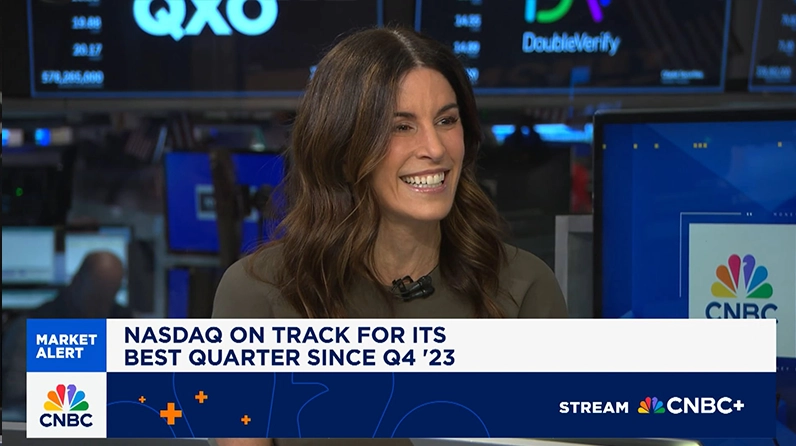

We advise our clients to take advantage of any volatility in the coming weeks to continue to move towards longer-term strategic allocations, particularly for those who are under-allocated to private markets and/or have large cash positions
U.S. CPI readings for April were a touch lighter than forecasted, with U.S. headline CPI up +0.2% month-over-month (MoM) and up +2.3% year-over-year (YoY) versus consensus expectations for +0.3% and +2.4%, respectively. Core CPI also decelerated in the month, up +0.1% MoM and up +2.8% YoY while economists were expecting +0.3% and +3.0%, respectively. These YoY prints are back to their early 2021 levels before the significant surge in inflation that saw the Fed react swiftly and aggressively to raise interest rates.
Driving the prints were a number of factors. Food prices were lower, off -0.1% in the month, driven by a -0.4% decline in groceries – its sharpest move since September of 2020. Despite a move lower in gasoline, energy prices were higher by +0.7% on a spike in natural gas and electricity costs. Airfares were lower, down -2.8%, for the second month in a row, reflecting the slower demand cited by companies in their most recent earnings reports. Shelter remains sticky, up +0.3% MoM and +3.6% YoY, as do motor vehicle insurance and medical care services, up +0.6% and +0.5% MoM, respectively. Interestingly, the only area of the economy that might be reflecting the recent tariffs is household furnishings & operations, up +1.0% MoM – even apparel was down -0.2% MoM. Admittedly, retailers are likely still moving through inventory built up ahead of April 2nd and recent history shows that supply related goods inflation can take several months to materialize.
Equity markets were initially higher on the release but have given some of that back in the session, while U.S. dollar and yields are lower. While certainly a good print, today’s news is overshadowed by a flurry of tariff news over the past two weeks, starting first with the announcement of a deal framework between the U.S. and the U.K. that provided a baseline for further negotiations. While the U.S.-U.K. deal maintained the 10% baseline tariff, it opened the door to greater negotiation of sectoral tariffs and appeared to set the tone that the Trump Administration is particularly interested in improving market access for U.S. producers. This was followed by yesterday’s announcement of a significant decrease, at least in the short-term, on tariffs between the U.S. and China. While there was admittedly a lot riding on the meetings in Geneva this past weekend between U.S. and China officials, the outcome was more positive than expected in terms of de-escalating tariff tensions.
The two countries announced a 90-day reduction in tariff rates, with the U.S. reducing the general tariff rate from 145% to 30% - 20% fentanyl plus 10% reciprocal – while the Chinese committed to a 10% levy. Admittedly, the 30% are on top of the pre-existing Chinese tariffs and sectoral tariffs are still in play as well, particularly in industries that the Trump Administration believes are susceptible to dumping. However, the short-term decrease to an average weighted tariff rate of 14% is important, as it likely spurs normalization in terms of shipments, alleviating the supply chain challenges that U.S. consumers were likely to feel in the coming weeks.
With at least modest inflationary impacts still a risk, but the threat of a short-term, meaningful downdraft in economic activity mitigated in part by the delays, our view is that the Fed has been given the time it needs to see if there will eventually be a spillover from dour soft data to hard data. However, continued evidence of disinflation coupled with slower economic growth could reignite calls that the Fed is too restrictive and could press the timeline forward from September to July should subdued business confidence translate to even lower hiring and a pullback in capital expenditure. Worth watching will be the bond market’s reaction to the combination of a potentially more flexible Fed and an extended/expanded TCJA, as it will create friction and, frankly, potentially some volatility in yields which have proven to be a continued impediment to investment, particularly residential investment, to start the year. We advise our clients to take advantage of any volatility in the coming weeks to continue to move towards longer-term strategic allocations, particularly for those clients who are under-allocated to private markets and/or have large cash positions.


MARKET COMMENTARY
It Pays to Be Optimistic

INSIGHTS
Alert: Major Federal Tax Law Changes

INSIGHTS
CIO Notebook: U.S. Non-Farm Payrolls Better than Expected but Questions Remain

INSIGHTS
CIO Notebook: Light May Inflation Readings Put Fed on Notice

VIDEO
Holly Newman Kroft Discussed Current Market Environment on CNBC

MARKET COMMENTARY
May’s Markets in Full Bloom

INSIGHTS
CIO Notebook: U.S. Non-Farm Payrolls Just Good Enough to Calm Investors
INSIGHTS
Alert: Current U.S. Tax Proposals
VIDEO
Holly Newman Kroft Featured on CNBC’s Money Movers
INSIGHTS
April Inflation Showing Few Signs of Tariff Related Acceleration
INSIGHTS
Our Advisors Ranked in “Barron’s Top 100 Financial Advisors” List for 2025
INSIGHTS
Our Teams Ranked in “Barron’s Top 250 Private Wealth Management Teams” List for 2025
INSIGHTS
CIO Notebook: Fed Acknowledges Higher Uncertainty and Increased Risk While Holding Rates Firm
IMPORTANT INFORMATION:
This material is provided for informational purposes only and nothing herein constitutes investment, legal, accounting or tax advice, or a recommendation to buy, sell or hold a security. This material is general in nature and is not directed to any category of investors and should not be regarded as individualized, a recommendation, investment advice or a suggestion to engage in or refrain from any investment-related course of action. Any views or opinions expressed may not reflect those of the firm as a whole. Neuberger Berman products and services may not be available in all jurisdictions or to all client types. Diversification does not guarantee profit or protect against loss in declining markets. Investing entails risks, including possible loss of principal. Investments in private equity are speculative and involve a higher degree of risk than more traditional investments. Investments in private equity are intended for sophisticated investors only. Unless otherwise indicated, returns shown reflect reinvestment of dividends and distributions. Indexes are unmanaged and are not available for direct investment. Investing entails risks, including possible loss of principal. Past performance is no guarantee of future results.
Portfolio positioning views expressed herein are those of Neuberger Berman’s Private Wealth Investment Group, which may include those of the Neuberger Berman’s Asset Allocation Committee. Asset allocation and positioning views are based on a hypothetical reference portfolio. The Private Wealth Investment Group analyzes market and economic indicators to develop asset allocation strategies. The Private Wealth Investment Group works in partnership with the Office of the CIO. The Private Wealth Investment Group also consults regularly with portfolio managers and investment officers across the firm. The Asset Allocation Committee is comprised of professionals across multiple disciplines, including equity and fixed income strategists and portfolio managers. The Asset Allocation Committee reviews and sets long-term asset allocation models, establishes preferred near-term tactical asset class allocations and, upon request, reviews asset allocations for large, diversified mandates. Asset Allocation Committee members are polled on asset classes and the positional views are representative of an Asset Allocation Committee consensus. The views of the Asset Allocation Committee and the Private Wealth Investment Group may not reflect the views of the firm as a whole and Neuberger Berman advisers and portfolio managers may take contrary positions to the views of the Asset Allocation Committee or the Private Wealth Investment Group. The Asset Allocation Committee and the Private Wealth Investment Group views do not constitute a prediction or projection of future events or future market behavior. Defensive positioning generally means an underweight bias on allocations to risk assets such as equities and alternatives. Positioning views may change over time without notice and actual client positioning may vary significantly. Discussion of yield characteristics or total returns of different asset classes are for illustrative purposes only. Such asset classes, such as equities and fixed income, may have significantly different overall risk-return characteristics which should be consider before investing.
The information in this material may contain projections, market outlooks or other forward-looking statements regarding future events, including economic, asset class and market outlooks or expectations, and is only current as of the date indicated. There is no assurance that such events, outlook and expectations will be achieved, and actual results may be significantly different than that shown here. The duration and characteristics of past market/economic cycles and market behavior, including any bull/bear markets, is no indication of the duration and characteristics of any current or future be market/economic cycles or behavior. Information on historical observations about asset or sub-asset classes is not intended to represent or predict future events. Historical trends do not imply, forecast or guarantee future results. Information is based on current views and market conditions, which will fluctuate and may be superseded by subsequent market events or for other reasons.
Discussions of any specific sectors and companies are for informational purposes only. This material is not intended as a formal research report and should not be relied upon as a basis for making an investment decision. The firm, its employees and advisory accounts may hold positions of any companies discussed. Nothing herein constitutes a recommendation to buy, sell or hold a security. It should not be assumed that any investments in securities, companies, sectors or markets identified and described were or will be profitable. Investment decisions and the appropriateness of this content should be made based on an investor's individual objectives and circumstances and in consultation with his or her advisors.
Neuberger Berman Investment Advisers LLC is a registered investment adviser.
The “Neuberger Berman” name and logo are registered service marks of Neuberger Berman Group LLC.